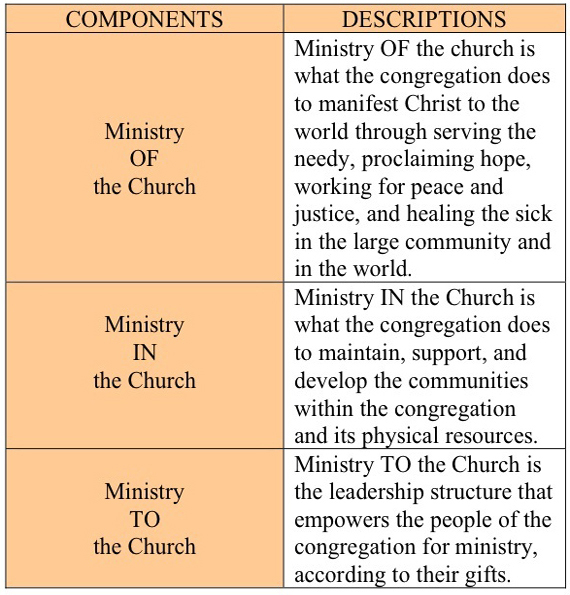Eric H.F. Law, Episcopal priest and internationally known consultant on multiculturalism, in his book, Inclusion: Making Room for Grace, invites congregational leaders to think of their church ministries in three components. The three ministry components and descriptions are:

Comparing congregational ministries to a three-legged stool, Sloan says “For a congregation to exercise its ministries effectively, it must achieve a balance of the components.†(p. 88) He stresses the need that each component must support the other two. If one is “shorter†than the other two the church’s effectiveness is minimized—like a stool that has one leg that is shorter than the other two. After working with over twenty churches through a process of clarifying the components and providing dialogue for church members to assess the ministries of their church, Sloan says, “I discovered that the most revealing, but usually the most difficult, part of the process is the ‘ministry to the church.’†(p.89)
How, in your congregational experience, do you see these three components supporting one another?


1 Response to Like a Three-Legged Stool